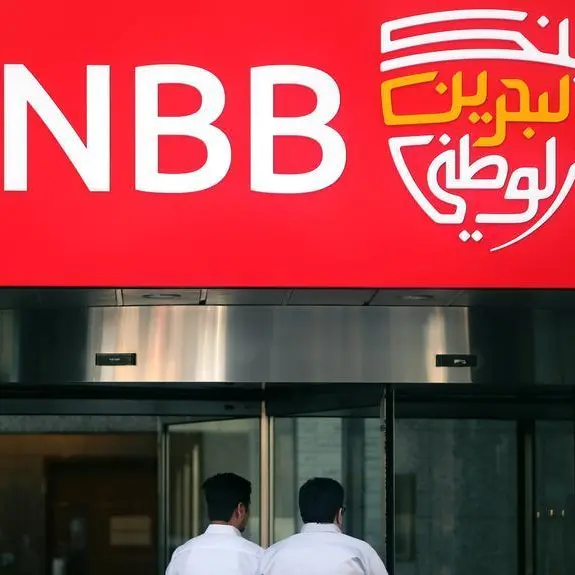PHOTO
Image used for illustrative purpose. An investor holds the tasbeeh as he monitors electronic boards displaying stock information
The objective of Islamic finance is to promote sustained growth and full employment while contributing positively to poverty alleviation and, ultimately, to economic and social justice.
This is achieved by institutionalising the economic order on risk sharing based financing. Driven by the Quran and the Sunnah, the epistemological root of risk sharing, as the organising principle of the Islamic financial system, is discernible from chapter 2 verse 275 of the Quran. This verse, in part, decrees that all economic and financial transactions are conducted via contracts of exchange (al-bay') and not through interest-based debt contracts (al-riba). It can be argued that risk sharing - the crux of Islamic finance - serves as one of the most important desiderata of Islam i.e. the unity of mankind.
Classical Arabic Lexicons of the Quran define contracts of exchange (al-bay') as contracts involving exchange of property rights claims in which there are expectations of gains and probability of losses, see, for example, Al‐Tahquiq Fi Kalamat Al‐Quran Al‐Karim; Lisan Al‐Arab; Mufradat Alfaz Al Quran, Arabic Lexicon, among others. These sources define al-bay' as mubadalati al-maali bi al-maal. In English this can be rendered as "the exchange of one set of property rights claim for another". By entering into contracts of exchange, parties improve their welfare by exchanging the risks of economic undertakings, thus allowing division of labour and specialisation. Since in the Verse the contract of exchange (al-bay) appears first and the prohibition of riba thereafter, it can be argued that requiring contracts to be based on exchange constitutes a necessary condition and "no-riba" the sufficient condition of existence of an Islamic financial system. Together, these conditions constitute the organising principle of that system. The necessary condition (al-bay') and sufficient condition (no riba) must be met for a contract to be considered Islamic.
Considering the aspects of an Islamic financial system based on risk sharing, where there is no room for any return that is determined ex-ante to the contractual outcomes, independent of any profit or loss, the system becomes one that is based on no risk free assets, where all the financial assets are contingent claims. It can be stated that shares or equity issues of corporations appear to best fit the criteria. In a typical risk sharing arrangement such as equity finance, parties share the risk as well as the rewards of a contract. Assets are invested in remunerative trade and production activities. The return to assets are not known at the instant assets are invested, and is therefore a random variable making equities risky. In equity investment, the income is random and depends on the performance of the equity investment i.e. the payoffs are contingent upon a certain state of occurrence; Akin to Arrow-Debreu securities.
Based on the above discussions - with risk sharing and no-riba based financing as its chief tenants, an Islamic financial system can be envisioned as a two-tier financial system:
A 100 per cent reserve depository and safekeeping banking system for domestic and international payments.
Equity based risk-sharing investment banking that places real saving directly in private or public projects or indirectly via the stock market. Investors are shareholders.
The first sub-system keeps money deposits in trust and settles payments via clearing, withdrawals and other forms of payments. The second part of the system receives savings, which it invests in productive projects or in more liquid investment such as mutual funds or stocks. Depositors receive transferable or marketable shares that enable them to liquidate their investment if they chose to do so. Returns from the funds invested are ex-post and are distributed to the depositors as to the shareholders of equity capital. As a result, they share in profits and losses as well as in capital gains and losses. Islamic capital markets intermediate between saving units and investing units through risk sharing. They would include investment banking, venture capital, stock markets, mutual funds, exchange-traded funds, crowd financing and other forms of intermediary risk-sharing institutions.
Dr Mughees Shaukat, Head of Islamic Finance, College of Banking & Financial Studies, Muscat
A number of influential scholars, in the past, proposed reforms that would abolish the credit system and replace it by an equity-based investment system. For instance, among the most celebrated proposals along these lines was the plan formulated in the University of Chicago, 'Chicago Memorandum' in 1933 which called for 100 per cent reserve money and for an equity-based investment system. This would ensue in (i) much better control of a major source of business cycle fluctuations, sudden increases and contractions of bank credit and of the supply of bank-created money (ii) complete elimination of bank runs. (iii) dramatic reduction of the (net) public debt (iv) dramatic reduction of private debt, as money creation no longer requires simultaneous debt creation. A recent IMF study titled The Chicago Plan Revisited, found robust support for all of claims made in support of the proposed plan.
Risk sharing via equity financing is not novel to economic endeavors. Historical accounts suggest that equity financing has been a centuries old phenomenon in the Muslim world as well as in Europe of the Middle Ages. Enterprises were established with share ownership and were recorded as share owned or anonymous enterprise. Among the most used instruments were the 'Mudaraba' and 'Musharaka' partnership contracts. Borrowed from the Muslims and later came to be known as 'Commenda' and 'Maona', such financing modes were commonly used for financing long-term trade and investment in Western Europe. Further historical research submit that Commenda's contribution to industrial development of Ruhr Valley in Germany and in building railroads in Europe were particularly pronounced The Goitein examination of Geniza records suggest that (i) trade in Middle Ages was both extensive and intensive, financed by risk sharing partnerships; (ii) partnerships were used in industrial, commercial and public administrative projects; (iii) trade were largely not based on cash benefits or legal guarantees, but on the human qualities, mutual trust and friendship.
Given the recent times, the surging phenomenon of venture capital financing is a classic utilisation and demonstration of risk sharing based financing. It can be stated that there is an inseparable relationship between Islamic finance and venture capital since the latter is based on risk sharing and no-riba based financing; the essence of Islamic finance. Purely founded on the notions of Islamic Mudaraba financing, Venture capital (VC) is a type of risk sharing/equity financing that addresses, via pooled investments, the funding needs of entrepreneurial companies that for reasons of size, assets, and stage of development cannot seek capital from more traditional sources, such as public markets and banks.
Obtaining venture capital is substantially different from raising debt or a loan. Lenders have a legal right to interest on a loan and repayment of the capital irrespective of the success or failure of a business. Venture capital is invested in exchange for an equity stake in the business. The return of the venture capitalist as a shareholder depends on the growth and profitability of the business. This return is generally earned when the venture capitalist 'exits' by selling its shareholdings when the business is sold to another owner.
Most venture capital investments are done in a pool format, where several investors combine their investments into one large fund that invests in many different startup companies, even SMEs. By investing in the pool format, the investors are spreading out their risk to many different investments . By definition, VCs also take a role in managing entrepreneurial companies at an early stage, thus adding skills as well as capital, thereby differentiating VC from buy-out private equity, which typically invest in companies with proven revenue, and thereby potentially realising much higher rates of returns.
The best demonstration of venture capital could be found in some European and US centers, mainly the Silicon Valley of the US, reaping enormous benefits from risk sharing/equity based financing. According to Cybercities (2008), in 2008, Silicon Valley was the third largest high-tech centre (cyber-city) in the US, behind the New York metropolitan area and Washington metropolitan area, with 225,300 high-tech jobs.
It is often argued from those who favour debt financing that the unprecedented development particularly in the last fifty years is essentially an outcome of the capitalistic system, based on interest bearing debt financing. To them the reduction, let alone elimination, of debt financing and bank money creation would reduce economic growth. The latter is an empirical issue that needs careful estimation alongside considering the social cost and benefits under such a regime. However, while not denying the development and overlooking the aspect of sustainable development, question arises as to how much of the ensuing development has only been through debt financing. It can be safely argued that most of the advances that seemed to have changed the dynamics of the world - particularly in the technological arena - have been through risk sharing modes than debt financing. To Askari et al., (2012), "much of the assumed contributions of finance over the last 30 or so years, and thus debt financing and leverage, have only been a mirage", given also the pro tax and legal support. In Quran, Allah has ordained the believers, not to get discouraged by the apparent well-being of the non-believers (see chapter 43 verse 33-35).
In view of Oman's economic diversification, increased employability and human development goals, recently a ground breaking development on the above lines took place. This relates to Oman's first ever venture capital firm Ethmar, with an initial fund of RO10mn. The VC firm is mandated to support innovative ideas of those who are not able to avail loans due to the high risk that their projects involve. In addition, the current laws and regulations can sustain such initiatives encouraging companies even from outside Oman to set up venture capital companies in the sultanate, either as standalone or in partnership with companies in Oman. This development could be viewed as a major step towards achieving the above goals while securing a progressive and stable economy.
Comparing the features of debt and equity financing such as venture capital, Nobel Laureate Joseph Stiglitz argues that from the perspective of the entrepreneur, equity has two related distinct advantages. Risk is shared with the provider of capital, and there is no fixed obligation for repaying the funds. Thus, if times are bad, payments to the providers of capital are suspended. The firm will not face bankruptcy, and will not be forced to take the extreme measures intended to stave off bankruptcy. From a social point of view, equity has a distinct advantage: because risks are shared between the entrepreneur and the capital provider, the firm will not normally cut back production as much as it would with debt finance, if there is a downturn in the economy.
In addition, debt contracts need to be continually rolled over: as a result new credit supply is vitally important to the economy. Equity instruments are typically permanent; they do not need to be continually replenished each year; an economy could function for a period with new equity issue markets completely closed. Debt contracts in contrast have finite terms. Without continual refinancing, many otherwise solvent firms would go bankrupt. Oscillations in new debt supply are therefore potentially far more harmful than oscillations in new equity supply. It can hence be asserted that equity based finance, like venture capital, is stable as assets and liabilities adjust to shocks, given the automatic matching in risks, maturity and value, making the system immune to debt crisis and more progressive. The economy will necessarily be driven by the rate of return to the real sector and will contribute to the same; ideally suiting the Omani ambitions of human development, increase employability and diversification.
© businesstoday 2016





















